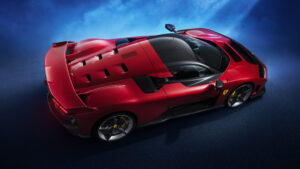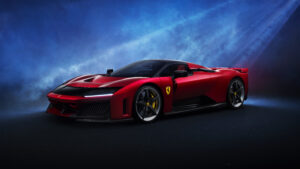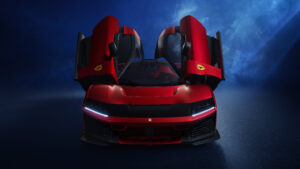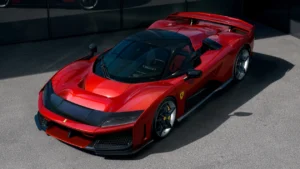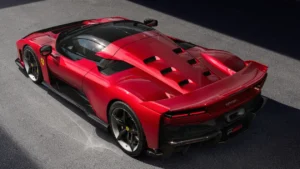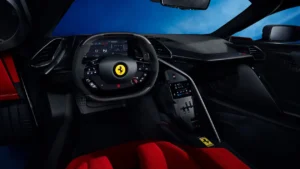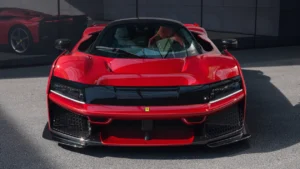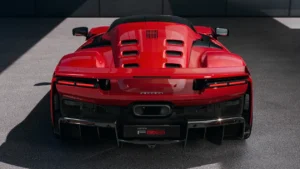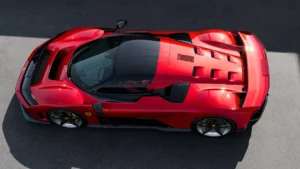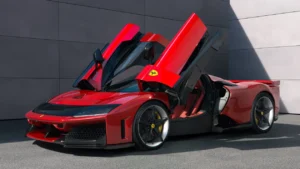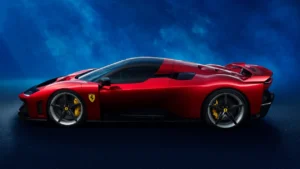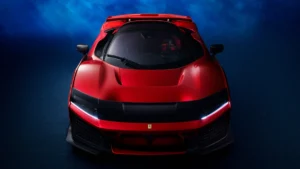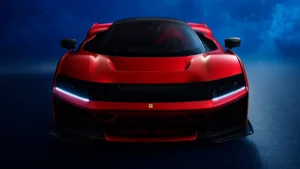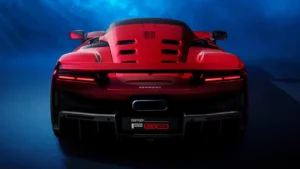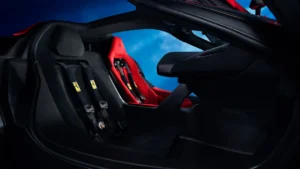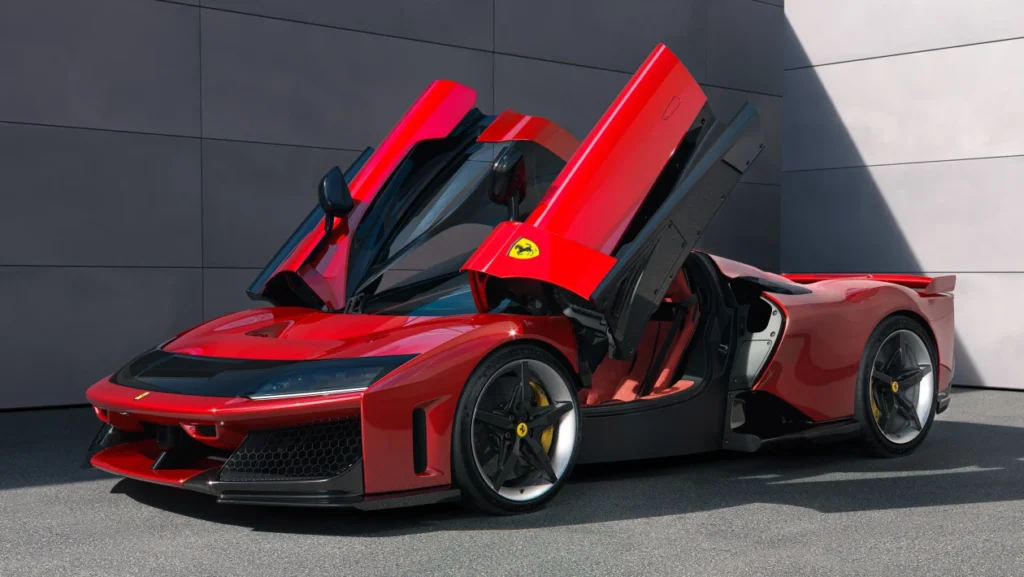
Ferrari has unveiled its latest “once-in-a-decade” hypercar, the F80. This new machine joins prestigious company alongside the F40, F50, Enzo, and LaFerrari, showcasing the brand’s cutting-edge technology and design ambitions.
With a starting price of around £3.1 million (approx. R70 million), the F80 will be limited to just 799 units, all already spoken for with deliveries starting in late 2025. This isn’t a one-off creation, but a technical showcase for the next generation of Ferrari’s series production models. It features a bespoke carbon fibre structure and a mid-engined hybrid powertrain.
The F80 boasts a combined peak power output of 1,183 bhp (883 kW). This ferocious power comes from a 120-degree 3.0-litre V6 engine aided by two turbos and no fewer than five electric motors.
The 887 bhp (662 kW) V6 engine takes inspiration from Ferrari’s F1 and 499P endurance racers. It redlines at 9,200 rpm and features a specially crafted intake and exhaust manifold designed to deliver an emotional “baby V12” sound. Mounted on the engine are two innovative electric turbos, each with a small electric motor positioned between the turbine and compressor wheel. This improves response and allows for extremely high boost pressures.
A small electric motor acts as a starter generator and provides torque-fill at low revs, mounted under the engine and connected to the eight-speed dual-clutch transmission on the rear axle.
Two 139 bhp (104 kW) e-motors are mounted on the front axle, making the F80 all-wheel drive and enabling active torque vectoring for improved handling.
A compact and lightweight 2.28kWh battery pack mounted behind the seats stores energy, fed by regeneration from the brakes and engine. There’s no plug-in capability.
Despite the extensive electrical components, the F80 weighs in at a remarkable 1,525 kg dry, approximately 40 kg lighter than the LaFerrari.
The F80 rockets from 0 to 100 km/h (62 mph) in a mind-bending 2.15 seconds, reaches 200 km/h (124 mph) in 5.75 seconds, and has a limited top speed of 350 km/h (217 mph).
The F80 boasts a revolutionary chassis and aero package to handle its immense power. The core is a carbon fibre cell surrounding the cockpit and upper engine compartment, with aluminium subframes supporting the front and rear suspension. The pushrod suspension features stunning 3D-printed suspension arms and a cutting-edge fully active roll control system. This system employs four additional electric motors to cancel out body movement and control vehicle pitch and dive. The sophisticated underfloor aero management and massive active rear wing generate a staggering 1,050 kg (2,315 lb) of downforce at 200 km/h (124 mph).
Ferrari’s chief designer, Flavio Manzoni, has created a car that pushes boundaries with its sci-fi-inspired design. The new design language features elements that bridge the gap between Ferrari’s past and future. The black fascia with hidden headlights creates a unique front profile, complemented by a large central aero opening and outer intakes. The flat front wheel arches evoke the F40’s rear wing section and help manage airflow around the car. Reinterpreted NACA ducts found on various Ferrari sports and competition cars since the 1950s sit on either side of the cabin behind the butterfly doors.
The unique cabin layout features an asymmetrical dash separating the driver and passenger. The driver’s information display sits directly on the steering wheel, while a passenger display resides on the passenger side dash. The new steering wheel features physical buttons, a departure from the haptic buttons found in current Ferrari models.
Just like its predecessors, the F80 pushes the boundaries of performance and technology. The electrical components are lighter, smaller, and more efficient than ever before. This innovation will pave the way for the next generation of Ferrari models that will hit the roads in the years to come.

